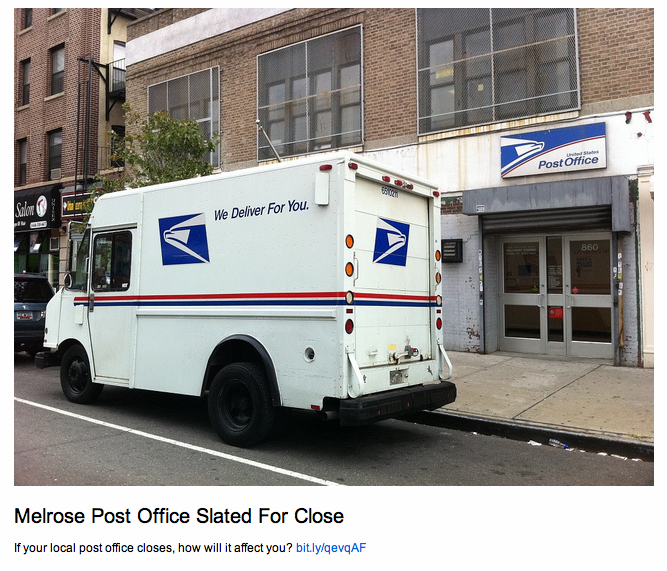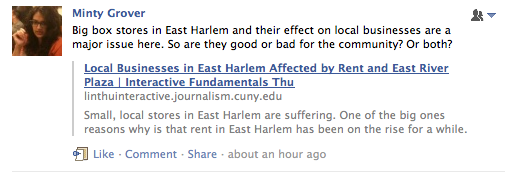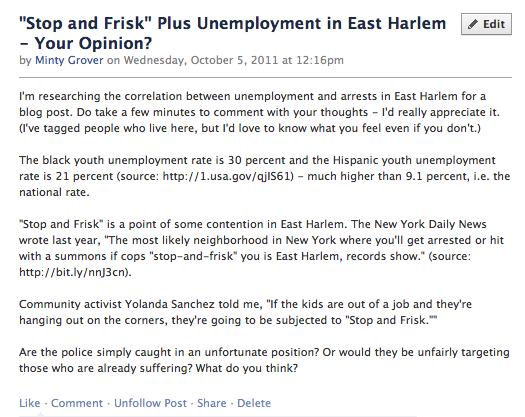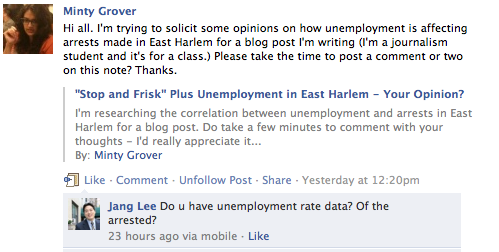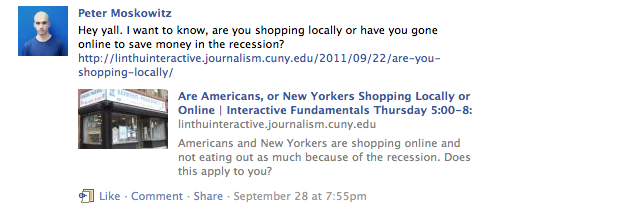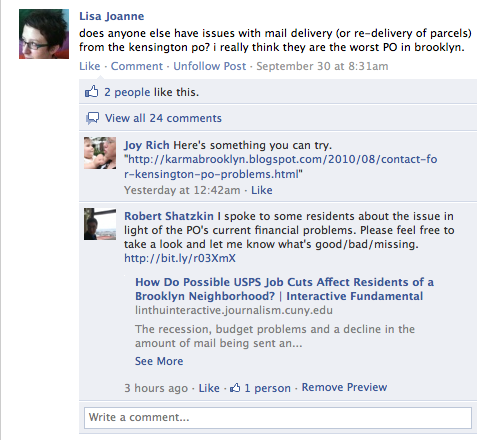This week, I was charged with promoting my last blog post and soliciting responses to my closing question: “Are you a small business owner in Brooklyn? How has the arrival of big box stores affected your business? How have you responded?”
How did it go? Let’s look at exhibit A.
Well, exhibit A doesn’t exist. Why? Because I didn’t screen capture the note that I posted to Our Brooklyn, Our Business — and because it no longer exists. Apparently the group doesn’t take kindly to strangers clogging up its feed. So lesson numero uno: build a relationship with people and groups before you post to a page or ask any other sort of favor.
Moving on, let’s look at my first efforts at promoting on twitter:
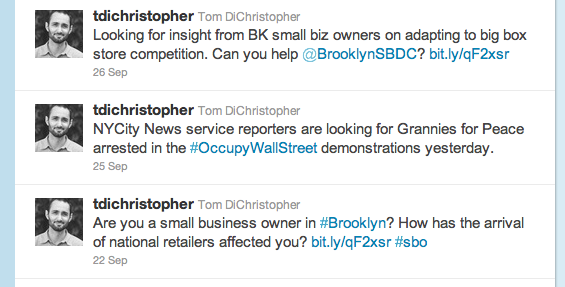
I didn’t get any response to the 22 Sep post. That #sbo hashtag stands for small business owner, which I found on hashtag.org. I probably could have been more explicit that I wanted people to follow the link and comment.
Moving forward, I thought I’d try to solicit help from a specialist, the Brooklyn Small Business Development Center, or @BrooklynSBDC. What did I get back? Bupkis. Same lesson, different platform. People who don’t know you aren’t likely to help you.
Perhaps the poor response also had to do with my klout. My overall score is a “steady” 35. I have “a good size network that is highly engaged.” I’m engaged by “influencers.” But much of what I’ve tweeted about relates to my past life: Vietnam, ASEAN, and Southeast Asia. So my Brooklyn small business message is likely reaching the wrong audience.
This klout session gave me an idea for my second assignment: soliciting a topic for my survey blog. One of the people I influence is @katelizdee, aka, my big sister Kate. Kate is a Socializer, influential on public relations, social media, and extras (whatever extras are). She’s also a human resources specialist, so…

Kate got back to me via email. Her response: “What about something along the lines of the domino effect from the recession and grads competing for entry level jobs? Something like that?” She also said she’d have to email her contacts, as many HR folks aren’t actually on twitter. So that’s still social networking, right? Right?
Back to Facebook. Here was another attempt:

Nothing. Perhaps I was a bit vague. Taking a page from my twitter lesson, I decided to narrow my scope and give people a bit more direction. I wouldn’t look for a specific topic, but fodder for inspiration. I sent six friends who work in editorial or creative capacities the following message:
Hey there. If you’re receiving this, it’s because you are or were in a creative or editorial field in New York between 2007 and today. I’m soliciting insight on what folks like yourselves did to keep afloat during these tough years when we were introduced to such cherished terms as “permalancer”. How did you cope? Did any unexpected positive experiences come out of your brush with the downturn? What steps did you take to keep yourself sharp and competitive when work was trickling in or at a standstill?
By the time I wrote this very post you’re now reading, one person had gotten back to me. And a CUNY J-School graduate no less. Her insight was troubling to say the least. But it did give me some ideas for a survey, which I may conduct on job-hunting and expectations for post-graduate school life.









